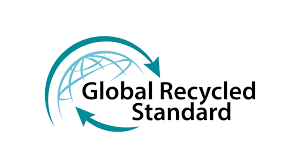One of the most famous is textile and clothing production, with Bangladesh being a South Asian country. Throughout the years, a number of countries have significantly influenced the fashions in Bangladesh. However, Bangladeshi apparel companies and consumer have started to prefer Chinese fabrics lately. DoTexTile is here to help you.

Only the good fabrics from China are usually known for their excellent quality and robustness. They will break in well and wear beautifully over time, washing out rugged but also polished looking. They are also cheaper than a few other materials. This has encouraged many Bangladeshi garment producers to also switch over to the usage of Chinese fabrics. This transition to alternative materials is having a significant impact on the world of art and culture in Bangladesh.
Bangladeshi Fashion, Meet Chinese Fabrics
Chinese fabrics, on the other hand, gained popularity in Bangladesh as they come at a reasonably cheap price and are known for their superior quality. These fabrics are now fulfilling the void, and Bangladeshi clothing companies have incorporated these in their designs as well, the results seem quite impressive.
Hence, it becomes simple for Bangladeshi clothing companies to produce high quality clothes at much affordable prices as compared with other giants keeping in mind that they use Chinese fabrics. This enables them to sell their style of clothes on competitive rates, as well, without compromising over the quality. Hence, a greater number of people now buy clothes from Bangladesh. Not only does this benefit the companies, it is equally beneficial for a country like Bangladesh where some economic growth could go a long way.
Chinese Fabrics and Bangladeshs Eco Friendly Initiatives
The values towards eco-friendliness is high in Bangladesh. In recent years, the domestic garment industry has been striving to operate in a more sustainable way. A good practice to follow on this path is using sustainable materials and fabrics like Oxford Fabric.
Most of the fabrics available are designed for the Chinese market and come without meeting the eco-friendly standards that Bangladesh is looking to bring in place. These are constructed using sustainable materials, that do not lead to pollution. In addition, the production of these fabrics is both ethical and sustainable. This will enable Bangladesjson apparel companies to follow through in their commitment to sustainability and offer high quality products at an even more affordable price.
Bangladesh — China Relationship Grown Up
The ties between China and Bangladesh Nylon Taffeta are on a rise over the recent years. The two countries have been working to stimulate their economies and the apparel industry is a stark example of that effort. It has been a huge success in the case of Bangla-China friendship and these two bodies have got a lot of benefits from this collaboration.
These two countries are inter-dependent and as they assist each other in various fields make both to develop further. This teamwork ensures that Bangladesh's garment industry is more competitive in the world market. This provides companies with better materials and the opportunity to produce in a different way.
Chinese Fabric and Bangladesh Garment Industry-Future
This resulted in Chinese fabrics like Nylon Spandex Fabric now constituting the majority of material used by many Bangladeshi clothing companies. It transformed them to produce a quality apparel at an affordable price. Not to mention, because Chinese fabrics are relatively inexpensive and high quality, it has also been much more accessible for these companies to comply with the needs of consumers who want both affordable AND long-lasting alternatives.
Even in the future, it is expected that the Bangladeshi garment industry will include Chinese fabrics in the mix of production. It can also serve to raise the level of seam performance in both quality and overall factory cost which means higher quality garment seams at reduced production costs. This will ultimately assure a brighter and more sustainable future for both the clothing industry, as well as mankind I mean who does this not benefit right!

 AR
AR
 BG
BG
 HR
HR
 CS
CS
 DA
DA
 NL
NL
 FI
FI
 FR
FR
 DE
DE
 EL
EL
 HI
HI
 IT
IT
 JA
JA
 KO
KO
 NO
NO
 PL
PL
 PT
PT
 RO
RO
 RU
RU
 ES
ES
 SV
SV
 CA
CA
 TL
TL
 IW
IW
 ID
ID
 LV
LV
 LT
LT
 SR
SR
 SK
SK
 SL
SL
 UK
UK
 VI
VI
 SQ
SQ
 ET
ET
 GL
GL
 HU
HU
 MT
MT
 TH
TH
 TR
TR


